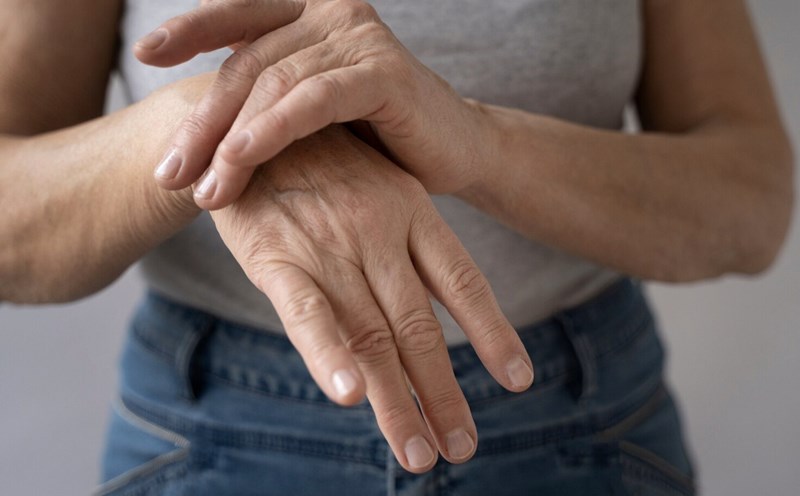5 reasons for arthritis outbreak in cold weather
Dr. Abhishek Vaish - Orthopedic surgeon at Indraprastha Apollo Hospital (India) - said that cold temperatures, reduced atmospheric pressure and weak sunlight are the main factors that increase stiffness and pain.
People with arthritis will be more affected by cold spells, explains Dr. Vaish. When the temperature drops, the capillaries shrink, causing stiffness and swelling of the joints, and causing the body to react to the buildup of inflammatory chemicals, making the condition more complicated.
According to Dr. Vaish, there are 5 main reasons why joint pain gets worse in winter:
Increased sensitivity of pain receptors: Cold temperatures increase sensitivity of pain nerves and receptors, causing patients to feel more severe pain.
Decreased atmospheric pressure: When air pressure drops, the soft tissues around joints tend to swell. This swelling creates tension and pressure on the joints, leading to a clear feeling of discomfort.
Muscle spasms: Cold weather stimulates increased muscle spasms. This condition not only worsens the pain but also causes stiffness.
Reduced blood flow: Cold temperatures reduce blood flow to the limbs ( hands and feet), which are areas prone to arthritis, making discomfort worse.
Vitamin D deficiency: Limiting exposure to sunlight in winter reduces vitamin D levels in the body, an essential nutrient for strong bones and joints.
5 strategies to help reduce joint pain in cold weather
To reduce the suffering of joint pain during the cold months, Dr. Vaish offers 5 effective tips that patients should apply:
Keep your body warm: This is the most important strategy. Keep warm in an environment with controlled temperatures. When going out, wear many layers of clothes made from fast-dried fabric like wool.
Wearing long linen helps keep your lower limbs warm, and don't forget to keep your hands and feet warm with socks and insulating gloves. Warm baths are also a helpful solution when coming home with pain from a cold.
Maintain activity (priority indoors): Regular exercise is an effective way to increase muscle strength, flexibility and energy levels, thereby reducing joint pain.
Choose low-impact exercises to avoid joint strain such as Yoga, indoor high-bike/wedging machines, aerobic exercise, or walking on a treadmill.
Use a compress: Compressed clothes, such as sleeves, gloves and socks, are effective pain relievers. They work by increasing blood circulation and retaining heat, providing an additional protective layer to the joints.
Supplement Omega-3 and Vitamin D: Eating foods rich in Vitamin D and omega-3 fatty acids (such as salmon, mackerel) helps strengthen bones and reduce discomfort.
Maintain a healthy weight: Excess weight puts unnecessary pressure on joints, especially the knee joint. In addition, people with a high BMI often have more brown fat tissue, which secretes inflammatory chemicals that are harmful to joints.
(The article is for reference only, not a replacement for professional medical advice. Always consult your doctor if you have health questions).











